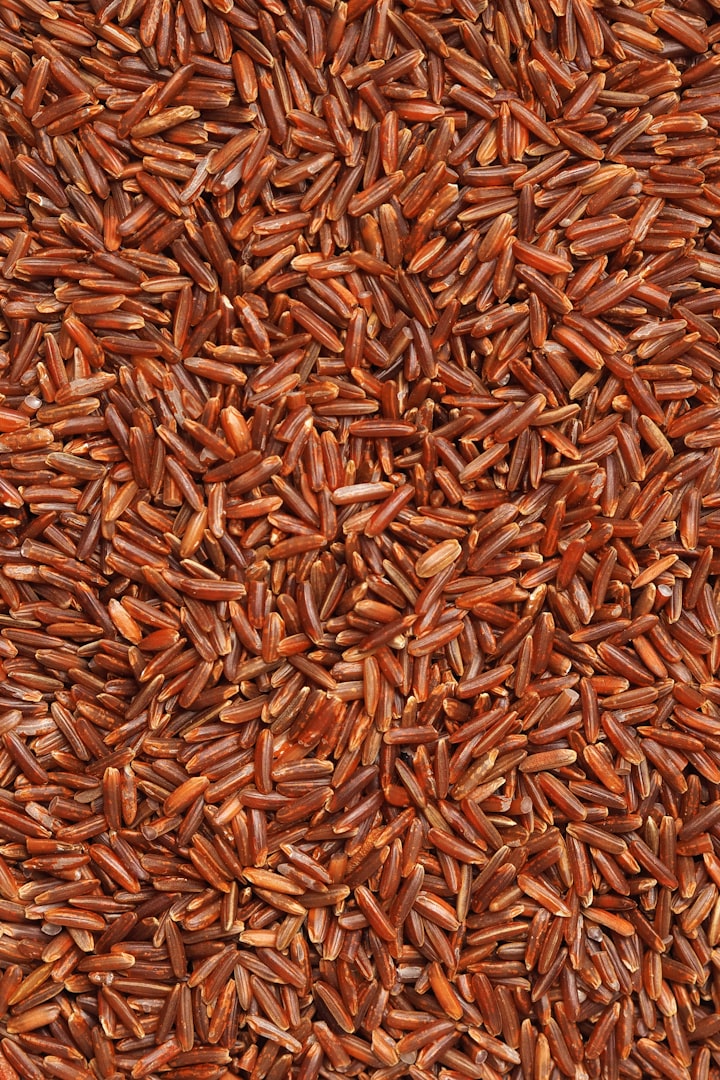
When it comes to grains, rice has been a staple in Indian cuisine for centuries. While many are familiar with white rice, red rice is gaining popularity for its impressive health benefits. In this article, we'll explore the nutritional advantages and potential side effects of consuming red rice.
Red Rice: A Brief Introduction
Red rice gets its name from its distinct reddish-brown color, which is attributed to its outer layer known as the bran. Unlike white rice, which undergoes heavy processing that removes this bran layer, red rice retains it, making it a whole grain. Here's why this matters:
Benefits of Red Rice
1. Rich in Nutrients:
Red rice is a nutritional powerhouse, packed with essential vitamins and minerals. It's a good source of iron, B vitamins, zinc, and magnesium, all of which are crucial for overall health.
2. Fiber-Rich:
One of the standout features of red rice is its high fiber content. Fiber aids digestion, helps maintain healthy cholesterol levels, and keeps you feeling full for longer, which can be beneficial for weight management.
3. Antioxidant Properties:
Red rice is loaded with antioxidants like anthocyanins and flavonoids. These compounds help protect your cells from damage caused by free radicals, reducing the risk of chronic diseases.
4. Low Glycemic Index:
Unlike white rice, red rice has a lower glycemic index, which means it has a milder impact on blood sugar levels. This makes it an excellent choice for individuals with diabetes.
5. Heart Health:
Regular consumption of red rice may promote heart health by reducing the risk of heart disease and lowering blood pressure.
6. Weight Management:
The combination of fiber and nutrients in red rice can support healthy weight management by curbing overeating and providing sustained energy.
Side Effects and Precautions
While red rice offers numerous health benefits, it's essential to be aware of potential side effects:
1. Digestive Issues:
Some individuals may experience digestive discomfort when first introducing red rice into their diet. Gradually increasing your consumption can help minimize this issue.
2. Phytic Acid:
Red rice contains phytic acid, which can interfere with mineral absorption. Soaking or sprouting the rice before cooking can reduce the phytic acid content.
3. Gluten Sensitivity:
People with gluten sensitivities should be cautious, as red rice does contain a form of gluten called prolamins.
4. Allergies:
Rarely, individuals may be allergic to red rice. If you experience any allergic reactions, discontinue use and consult a healthcare professional.
In Conclusion
Red rice is a wholesome and nutritious option that can enhance your overall well-being. Its impressive array of nutrients and health benefits make it a valuable addition to any Indian diet. However, it's crucial to consume it in moderation and be mindful of potential side effects, especially if you have specific dietary concerns. As always, consulting with a healthcare professional or a nutritionist is advisable for personalized advice on incorporating red rice into your diet.
Incorporating this nutritious grain into your meals can be a step towards a healthier lifestyle, benefiting both your taste buds and your well-being.
You Can Buy Me A Coffee If you like the post.





Comments
There are no comments for this story
Be the first to respond and start the conversation.